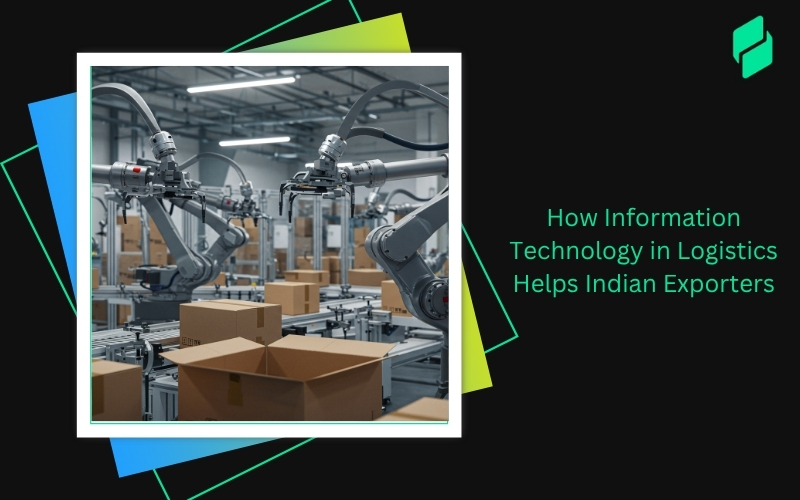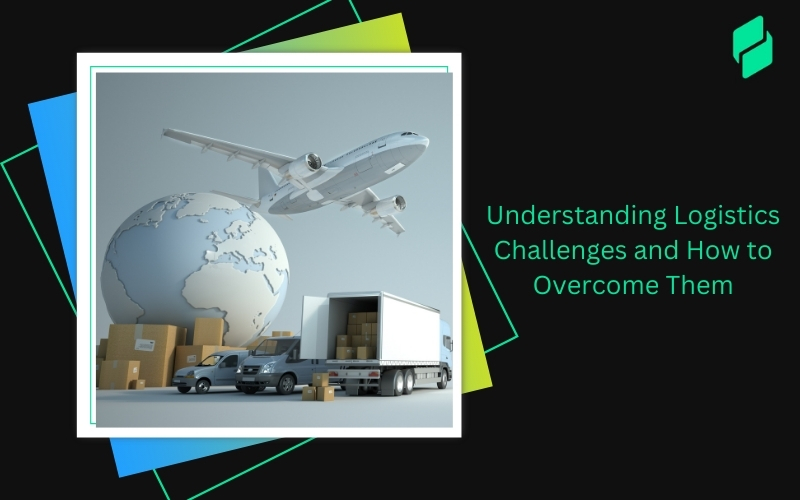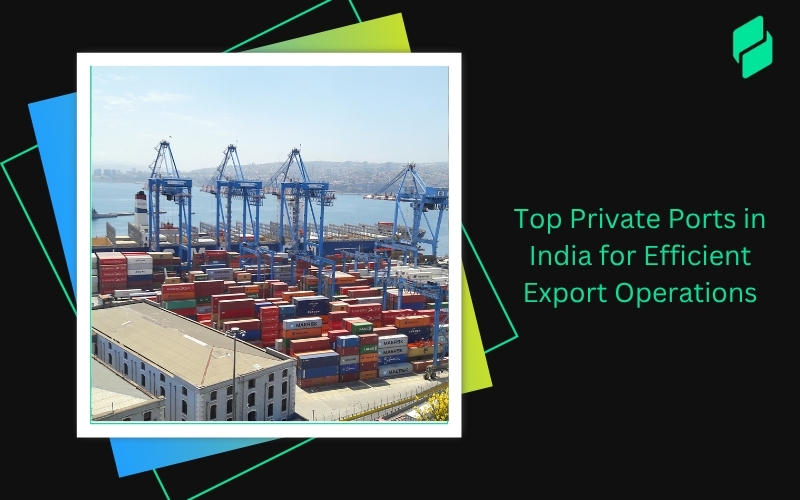Optimize your business: use unlimited savings with Pazago fulfilled now!
Get Started ->Ever paused to think about the complex mechanisms that drive the global marketplace? Whether it's a sleek smartphone or a shipment of essential materials, their journey from production to your reach is governed by the precise orchestration of logistics and transport.
Yet, these terms, often used interchangeably, hold distinct meanings and roles within the supply chain.
In this article, we'll explore the nuances of logistics vs transportation, dissect their roles, and clarify why understanding these differences can substantially impact global commerce's efficiency.
Defining Logistics: More Than Just Transportation
When considering the differences between logistics vs transportation, it's crucial to grasp that logistics encompasses the comprehensive management of goods' flow from the point of origin to the end of consumption. But what does this involve?
It's not just about moving items; it's about ensuring that the right products are in the right place, at the right time, and in the proper condition. This strategic orchestration helps businesses optimize their operations and efficiently meet customer demands.
Encompassing Order Fulfillment to Inventory Management
Logistics encompasses several essential components:
- Order Fulfillment: Efficiently process orders and ensure timely delivery.
- Warehousing: Strategically storing goods to maintain quality and accessibility.
- Inventory Management: Keeping track of stock levels to prevent shortages and surpluses.
These components are interlinked, each feeding into the next to create a cohesive system. Is your current logistics system optimized for maximum efficiency?
Strategic Planning and Execution
Logistics is not a set-it-and-forget-it operation. It requires ongoing strategic planning, execution, and management of the movement process to adapt to changing market conditions and business needs.
This involves everything from selecting the most efficient delivery methods to optimizing routes and managing supply chain risks.
Planning and executing a logistics strategy can be complex. Pazago offers streamlined logistics solutions, allowing you to focus on growing your business. Discover how.
Enhancing Operational Effectiveness
One of logistics' primary goals is to enhance operational effectiveness. This doesn't merely involve cutting costs but improving the overall value chain.
Businesses can achieve greater operational efficiencies by streamlining processes, reducing waste, and improving service delivery.
Roles in Planning, Managing, and Implementing Processes
Logistics is powered by professionals specializing in:
- Planning: Developing actionable strategies to streamline operations.
- Management: Overseeing the execution of logistics strategies.
- Implementation: Carrying out the logistics plans on the ground.
These roles ensure strategies are created, implemented, and continuously refined.
Defining Transportation: The Lifeline of Global Connectivity
Transportation, a crucial component in the discussion of logistics vs transportation, is fundamentally about the movement of people and goods across air, land, and water. But what does this entail?
Imagine a world where goods, ideas, and cultures could not cross oceans or continents. Transportation breaks these boundaries, enabling global trade, cultural exchanges, and international relations.
Infrastructure and Operations: The Backbone of Transportation
Transportation isn't just about vehicles; it relies on a robust infrastructure and efficient day-to-day operations.
This includes everything from roads and bridges to airports, seaports, and vehicles. Each element must work seamlessly to ensure that goods and people move efficiently.
Key Features: Safety, Efficiency, and Accessibility
Safety, efficiency, and accessibility are the pillars of a successful transportation system. These features are crucial for:
- Safety: Protecting lives and goods during transit.
- Efficiency: Reducing time, costs, and environmental impact.
- Accessibility: Ensuring that transportation services reach as wide an audience as possible.
Impact on Supply Chains and Customer Delivery
Transportation is indispensable in securing supply chains and delivering goods to customers.
Its reliability ensures that supply chains are resilient and businesses can meet customer commitments, thus maintaining trust and satisfaction.
Ensure your supply chain resilience with Pazago's round-the-clock shipment tracking and comprehensive trade management tools.
Logistics vs Transportation: Differences
Understanding the differences between logistics and transportation is crucial for optimizing supply chain efficiency.
Let's break down the key distinctions that separate these integral components of commerce.
Logistics vs Transportation: Strategic Planning vs. Tactical Execution
- Logistics: Involves comprehensive strategic planning, controlling, and execution of product flow and storage from origin to consumption. It aims to anticipate and meet demands efficiently.
- Transportation: Focuses primarily on the tactical aspects, such as choosing the most effective methods and routes for moving goods.
Logistics vs Transportation: Operational Depth
- Logistics: This department manages a wide array of functions, including warehousing, packaging, inventory control, and insurance, ensuring that all facets of the supply chain are robust and integrated.
- Transportation: This field concentrates on the physical movement of goods, often limited to decisions about transportation modes and route optimizations.
Logistics vs Transportation: Technological Integration
- Logistics: Utilizes advanced technologies like AI, machine learning, and data analytics to streamline operations and predict future trends, enhancing overall supply chain responsiveness.
- Transportation: This sector employs technology that improves transportation means and efficiency, such as GPS for route optimization and fleet management systems.
Logistics vs Transportation: Financial Considerations
- Logistics encompasses budgeting for the entire supply chain and addresses cost management in storage, handling, and distribution processes.
- Transportation: This area deals with immediate transportation costs, focusing on expenses such as fuel, maintenance, and freight charges.
Logistics vs Transportation: Communication and Stakeholder Interaction
- Logistics: Requires coordination among multiple stakeholders, necessitating complex communication and relationship management to synchronize the supply chain.
- Transportation: Involves more direct communication focused on specific tasks like scheduling and delivery confirmation.
Logistics vs Transportation: Risk Management
- Logistics: Strategically addresses broader supply chain vulnerabilities, implementing risk mitigation strategies for potential disruptions like supplier failures or inventory issues.
- Transportation: Concentrates on managing immediate risks related to the physical transport of goods, such as vehicular breakdowns or logistic barriers.
Logistics vs Transportation: Compliance and Regulatory Adherence
- Logistics: The company must comply with a broad set of international trade laws, safety regulations, and environmental standards governing various supply chain aspects.
- Transportation: Primarily focuses on adhering to vehicle regulations, transit laws, and specific route compliance requirements.
Understanding the Critical Role of Logistics and Transportation in Supply Chains

Ever wonder how the items you order online arrive at your doorstep? The collaboration between logistics and transportation is crucial for getting these goods to you, powering our economy, and making supply chains efficient.
Let's break down how these two components are essential for businesses and our daily lives.
1. Enabling Efficient Movement of Goods
Logistics and transportation are fundamental to the economy, ensuring products move efficiently worldwide.
This process is vital for the timely delivery of everything from groceries to essential manufacturing parts.
2. Reducing Costs and Improving Customer Service
These processes help businesses cut costs and enhance customer service. Effective logistics can lead to faster deliveries, which boosts customer satisfaction, while smart transportation reduces spending, particularly on fuel and time. Is your company using these advantages to serve customers better and reduce expenses?
3. Increasing Overall Efficiency
Logistics and transportation improve efficiency in managing inventory and increasing production output.
Good logistics means businesses keep enough stock and reduce excess, while efficient transportation ensures quick production cycles.
4. Preventing Supply Chain Disruptions
In today's global market, a minor disruption can affect entire supply chains. Strong logistics and transportation strategies help businesses withstand unexpected challenges, from natural disasters to market shifts.
Looking to cut costs and enhance customer service? Pazago’s digital trade management platform is designed to help businesses achieve just that.
The Transformative Impact of Technology on Logistics and Transportation
Technology has revolutionized the logistics and transportation sectors, fundamentally changing how goods are moved and managed worldwide.
Let’s delve into the specific technological advancements and their profound effects on these crucial areas.
1. Enhancing Efficiency and Reducing Costs with Digital Tools
Example: Cloud-based logistics platforms enable real-time inventory management from anywhere, reducing the need for physical checks and associated labor costs.
Impact: Such tools enhance operational efficiency by streamlining processes and reducing the overhead associated with traditional logistics operations. For businesses, this translates into lower operational costs and increased profitability.
2. Shaping the Future with Modern Technology and AI
Example: AI-driven route optimization software analyzes real-time traffic, weather conditions, and vehicle performance to suggest the most efficient routes.
Impact: AI reduces fuel consumption and delivery times and helps maintain a predictable supply chain, crucial for customer satisfaction and operational reliability.
3. Tracking Systems: Ensuring Transparency and Improving Communication
Example: GPS tracking and RFID technologies provide real-time data on the whereabouts of goods, from the warehouse shelf to the customer’s doorstep.
Impact: These tracking systems enhance transparency by allowing all stakeholders, including customers, to view the real-time status of their deliveries.
This capability improves trust and communication between suppliers, shippers, and consumers, enhancing service delivery and customer satisfaction.
Pazago enables businesses to track shipments in real-time and manage trades with cutting-edge digital solutions.
Future Perspectives on Logistics and Transportation

As we look ahead, the evolving landscape of logistics vs transportation continues to be shaped by emerging challenges and innovative solutions. How will these changes impact your business, and how can you stay ahead?
1. Addressing Supply Chain Challenges with Innovation
The complexity of modern supply chains necessitates continual innovation to keep up with changing consumer demands, regulatory pressures, and global disruptions.
AI and IoT are becoming integral in creating more responsive and resilient supply chains. For example, AI can forecast disruptions and automatically reroute shipments to minimize impact. How is your company integrating new technologies to tackle these evolving challenges?
2. Sustainable Practices and Efficiency: Renewable Energy and Cloud Computing
The push towards sustainability is driving significant changes in how goods are transported. Adopting renewable energy sources in transportation, such as electric trucks and solar-powered ships, reduces the carbon footprint of moving goods across the globe.
Simultaneously, cloud computing enhances operational efficiency by enabling more data-driven decision-making and real-time communication across the supply chain. Is your business exploring these eco-friendly and efficient advancements?
3. The Rise of Intermodal and Multimodal Transport Methods
The growing importance of intermodal and multimodal transportation methods highlights a shift towards more flexible and efficient logistics practices.
These methods utilize multiple forms of transportation (like rail, ship, and truck) to execute a single shipment, reducing costs and environmental impacts by optimizing routes and loads.
This flexibility is precious in adapting to the unpredictable dynamics of global trade. How is your organization leveraging these advanced transport strategies to enhance logistical operations?
Pazago is at the forefront, offering innovative solutions like AI forecasting and digital management to tackle industry challenges head-on.
Conclusion
As we've explored throughout this discussion on logistics vs transportation, it's clear that while they are distinct functions within the supply chain, their roles are deeply intertwined.
Each plays a pivotal role in the seamless flow of goods from origin to destination, but their effectiveness is magnified when strategically integrated.
How well do you understand the interplay between these two critical components in your business operations?
Let Pazago simplify it for you, ensuring your operations stay ahead of the competition. Discover the ease of managing your supply chain with Pazago today.


.png)








